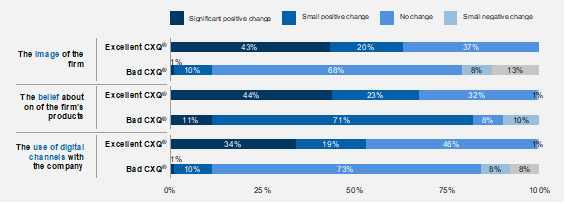Pour ne rien manquer, abonnez-vous à notre newsletter et recevez tous les mois les dernières actualités Bluebirds et des différents secteurs
Restons connectés


Restons connectés
Pour ne rien manquer, abonnez-vous à notre newsletter et recevez tous les mois les dernières actualités Bluebirds et des différents secteurs
For quite some time Digital had been seen more as a differentiating capability rather than a core one, with many commercial teams questioning its value and impact vs. tried and tested traditional channels. The current COVID crisis has clearly accelerated its adoption with many Pharma companies having implemented in a few months what they had failed to do in years before that. For Customer-Facing teams, it allowed to remove typical barriers by demonstrating how Digital can be used effectively to engage with healthcare professionals (HCPs). Increased exposure to remote and digital interactions also contributed to show Doctors how they can prove effective means in providing key information and services. As a result, we observed a significant uptake and openness to Digital in this period as demonstrated by recent Veeva Pulse data.

Moving forward we know that this shift to a Hybrid Model is here to stay with most expecting a ‘Phygital’ future with a mix of traditional Face-to-Face and Virtual engagements. The specifics of this balance will depend on various factors such as the product lifecycle stage, HCP specialty groups and Market environment in addition to obviously needs and preferences of individual customers for whom the path to the New Normal can be unique. In this new world, Digital segmentation will become key to truly understand HCPs and adapt engagement plans to suit their own realities.
If on one side we are now seeing a new environment where Digital is core, on the other side it is creating a challenge for Pharma companies to have to stand-out from the crowd with more overall ‘noise’ with the industry expected to increase Digital budgets by about 50%[1] in 2021. The use of Emails as an example of widespread digital tactic has doubled[2]. In this context unless ‘Value’ is delivered to HCPs, there is risk at best of fatigue or drastically reduced engagement rate. Recent data from Across Health illustrates this potential negative dynamic where more does not always lead to better, on the opposite. The graph below shows that most promotional digital interactions saw an increase in reach but decrease in impact (in red).

So how to define Value? In fact, already pre-COVID HCPs had shared what the most important factors when it comes to interactions with Pharma: Trust, Simplicity and Relevance[3]. This is becoming even more pertinent in our current environment with increasingly busy HCPs:
KPMG Nunwood has taken this concept further to introduce a hierarchy for the different factors in their latest Global Customer Experience report.

Using different words but with same meanings, Trust (here expressed as Integrity and Resolution) becomes the qualifying factor to provide the reason to engage with you – are you a credible and capable partner?
Next comes Simplicity (here expressed as expectations and Time & Effort) highlighting the fact that any complexity will act as a barrier and turn-off. This is for example exemplified by high bounce rate observed for many Pharma websites with poor design and navigation experience making it hard to quickly find key information and services.
Only when you can establish yourself as a Trustworthy partner and make it Simple for Customers, Relevance (here expressed as personalization and empathy) can become a truly differentiating factor.
This hierarchy is also useful to guide investment priorities with no need to work hard on personalization until you get the ‘basics’ fixed. A Relevant but yet complex experience would not work. This is also proven by Neuroscience research into relative priorities between pains and gains with the former being the prime consideration when considering options.
But do we know if that translates into business impact as this is a key question Leadership and Management needs answering in order to sustain investment into Transformation programs? We saw in the examples above the risk of losing out in terms of access and impact by not providing Value to target Customers – this is a clear downside. On the upside numerous studies and research have been published to demonstrate the benefits and positive impact of great experiences on the perception of the companies and their products, increased willingness to engage, higher intent to prescribe, and in the end top-line.


Through smart use of cost-effective Digital Tactics will also lead to higher operational efficiency and ROI.

Even if Value and Customer Experience are very topical and have been discussed at length over the past few years in the industry, the opportunity is still there to really make it happen, embedded into Commercial operations. There is a lot to learn from other sectors with NPS for Healthcare generally lagging behind[4].
COVID can hopefully be a catalyst creating the momentum for lasting changes, building on genuine goodwill, renewed sense of purpose and wave of increasing satisfaction of HCPs with Digital communication even if still less of the majority.

So how can we implement changes to our current commercial model to make it more customer-centric and to deliver on our promise for Value? We should first recognize that despite the use of acronyms such as Customer Journeys to describe Integrated Customer Engagement Plans, they remain essentially product-centric campaign plans articulated around target key messages sequencing and storytelling stemming from a Brand Plan. This is quite normal and a given as commercial teams need to deliver on their priorities and objectives. This will not happen by chance and need to be orchestrated.
Having said that however there are opportunities to design plans with Customers in mind to maximize Value exchange and the best way to frame them is to understand the direct implications of the components of Value and Customer Experience on each aspect of planning:

Delivering on Value will very importantly require the ability to define Value, to measure it, and to have the governance in place to use the insight to inform how best to progress on the original plan and adapt as needed. Even if a plan looks linear on a page, the reality will be different with its execution based on individual customers. In the end, one of the main benefits of a plan is to explain the story and related rationale to Customer-Facing teams and for them to then use this understanding to adapt it to individual customers based on their specific needs and preferences. They know them best.
The ability to measure Value and its impact is also an imperative to maintain momentum and sustain investment with Leadership through the demonstration of clear benefits in Customer Engagement and results.
Last and not least, measurement of value through multiple touchpoints will provide great additional insights and contribute to augment Customer knowledge, and in turn enable a greater degree of personalization … and impact.
But this is easier said than done. As an industry we are good at measuring input (e.g. reach and engagement) but far less experienced in systemic measurement of Customer Satisfaction and Impact with most experience with the latter being via ad-hoc and survey-based, self-reported data. Going forward, Customer Success measures should be captured at outset part of brand and campaign plans with KPIs and metrics set-up to track actual achievement, favoring observational techniques as truer representation of Customers’ views. Finally, these insights should be acted upon in a dynamic way through cross-functional teams’ reviews to guide progress of campaigns with a shift from static, cycle-based marketing to a more agile way of working structured around Customers ‘Stories’.
As Digital is now firmly established as a core capability, the ability to genuinely deliver on Value is becoming a key differentiating factor for Pharma companies. Successful implementation will require a holistic approach to change cutting across people, process, technology, content and data:
This is a well worth journey which the industry is embarking on with already quite a few examples of Global Transformation programs. Other industries have succeeded and setting expectations and the path forward … let’s get inspired by them as in the end we are not ‘that different’ and our Customers, HCPs are also Consumers like all of us.
To the New Normal!
Seasoned Life Sciences Executive and accredited Customer Experience Professional, Jean-Francois worked internationally on commercial model transformation with specific focus on embedding omni-channel and digital technologies to drive Customer Experience and Outcomes and in making innovation happen. With deep expertise and proven track record in senior roles in Industry and Consulting, he understands what it takes to drive and successfully implement Global Transformations.
[1] Across Health Maturometer survey
[2] Indegene Customer Experience Playbook
[3] Aptus Health/DT Associates CX Survey
[4] ExperienceCon surveys
